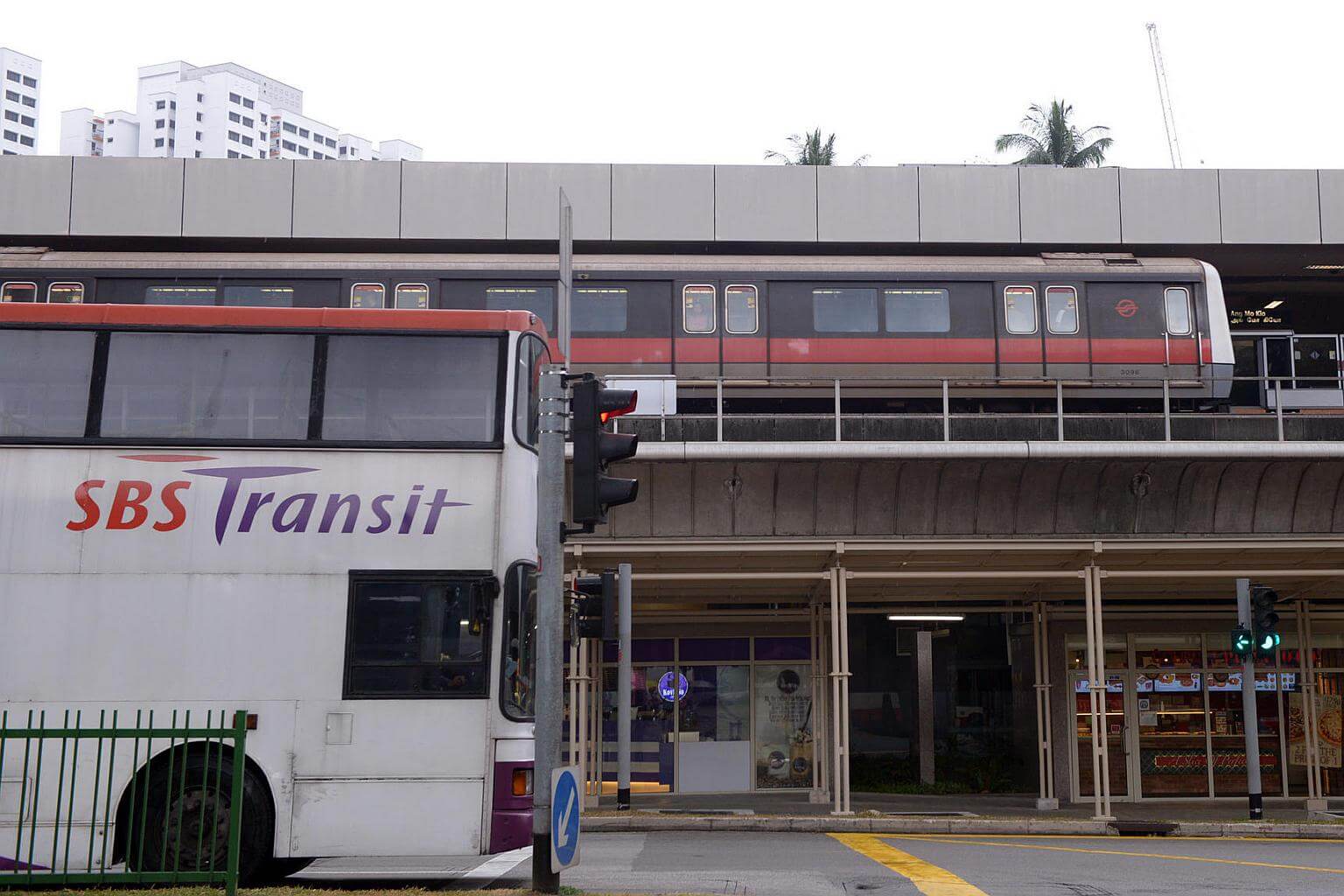Car ownership survey
Less need to have car if it's a 10min walk to public transport
Besides distance, frequency of bus and train services, weather cited
Sign up now: Get ST's newsletters delivered to your inbox

A train at the MRT station and public bus at the traffic junction in Ang Mo Kio on Jan 21, 2015.
PHOTO: ST FILE
Adrian Lim
Follow topic:
Having an MRT station or bus stop within walking distance from home - no further away than 10 minutes - would reduce the need to own a car.
About one in two young people said in a recent survey that this was how far they were willing to walk to take the train or bus, before they found it necessary to drive instead.
As the distance to rail stations or bus stops increased, fewer of the 501 respondents were willing to make the longer walk to take public transport. The study, commissioned by The Sunday Times and conducted by research firm Nexus Link, sought to understand the attitude of citizens and permanent residents aged between 18 and 35 towards car ownership.
It found that only 13.1 per cent of respondents would take the train if they had to walk between 11 and 15 minutes to the MRT station.
If the walking time increased to between 16 and 20 minutes, only 11.7 per cent said they would consider the train. These percentages dipped correspondingly when walking times increased.
When respondents were asked how far they would walk to the bus stop, similar findings emerged.
Asked why commuters are unwilling to walk longer than 10 minutes, SIM University senior lecturer Park Byung Joon said this is psychological. "We are programmed to think in blocks of five minutes. If we say we are only prepared to walk five minutes, we sound impatient. But 15 minutes sounds too long, so most will say 10 minutes," he said.
Commuter Vidya Krithivasan, 33, a part-time accountant, said: "In Singapore's hot and rainy weather, walking more than 10 minutes can be exhausting."
Dr Park said that given Singapore's climate, it can be challenging to get commuters to walk longer distances. "Maybe we can encourage them on the basis of it being good for health," he said, adding that building wider pedestrian pavements and shadier walkways may also encourage more to go on foot.
Currently, six in 10 households are within a 10-minute walk from a train station. This ratio will go up to eight in 10 households after the rail network is doubled in length to 360km by 2030.
Bus stops, on the other hand, are spaced about 300m to 400m apart from one another, but their locations are dependent on site constraints and traffic conditions.
Under its Walk2Ride programme, the Land Transport Authority is building more than 200km of new sheltered walkways by 2018, adding to the existing 56km. These will link commuters from MRT stations to residences as well as amenities such as schools and healthcare facilities in a 400m radius.
Besides proximity to bus stops, respondents also expected their buses to arrive promptly - about half said it would not be necessary to own a car if buses came at intervals of no longer than five minutes.
Nearly 23 per cent said they would ride the bus if services arrived at 10-minute intervals, while only 6.8 per cent would take the bus if it had a frequency of 15 minutes.
Dr Park said that rather than boosting bus frequencies, which can be costly as more resources and drivers will be needed, more can be done to adjust bus routes, so commuters get to transport nodes and public amenities in a shorter time.
But university undergraduate Goh Wei Hao, 22, said: "As buses are not as predictable as trains, it will be better if they can arrive more frequently. It'll make the wait less anxious."
As to how far he was prepared to walk to a bus stop or train station, Mr Goh said: "Ten minutes, but that's an estimate... If the stroll was smoother, for example, with nice pavements or fewer road crossings, I could do 15 minutes."

